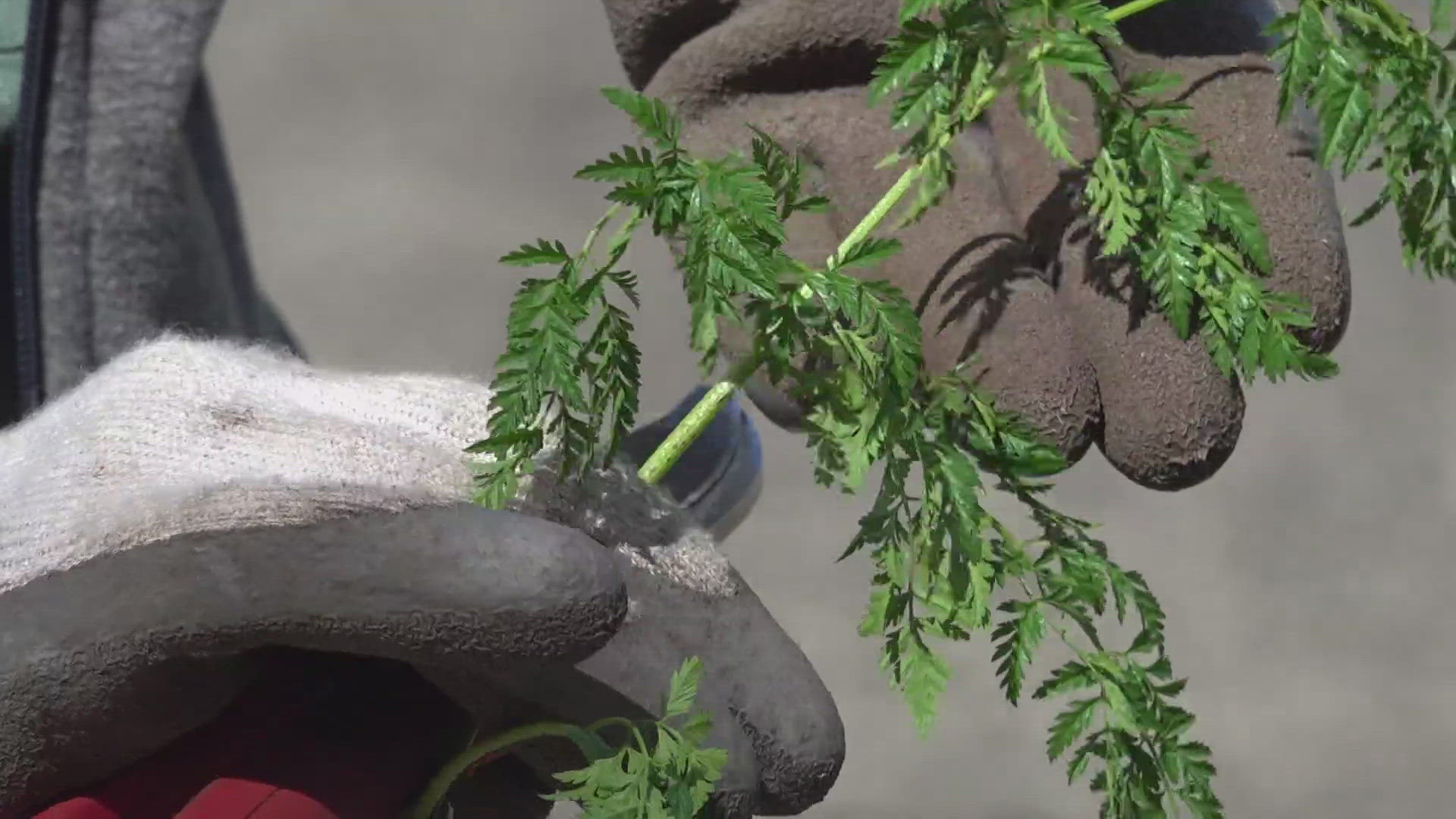SEATTLE — The King County Department of Natural Resources and Parks (KCDNRP) is warning residents about a toxic invasive weed they may find in their gardens.
Poison hemlock is a toxic biennial in the carrot family that can cause illness or death in people and animals. No one should eat it, and people are advised to remove it from their property.
The county has already detected patches of poison hemlock in public parks and open spaces this season and is working with other agencies to remove it, but says people may also find it on their own property. According to experts, removing it can help to slow its spread and prevent it from endangering more people and animals.
Rahel Stampfer is the policy and communications manager for KCDNRP's Noxious Weed Control Program.
"We find poison hemlock all over this region- in parks, open spaces, along roadsides, we find it unfortunately near playgrounds and schools, we also find it near community gardens and in pastures," Stampfer said. "So we're really on the lookout for those impactful places where we want to make sure it doesn't get accidentally eaten."
The plant can be identified by a hollow stem with markings and no hairs. Leaves look fern-like and flowers grow into umbrella-shaped clusters. They can be confused for species such as Queen Anne's Lace, but they are much more harmful for a person or animal to ingest. If found on personal property, KCDNRP recommends digging it up and throwing it out in the trash, not with compost. It is not harmful to the touch, but it can still be good to wear gloves when doing yardwork.
"You do not need to panic if you see it, but you have an opportunity here to reduce its spread by removing it, and its a collective responsibility we all have," Stampfer said.
The species can spread rapidly in the Northwest. Stampfer says it is not a native plant with natural controls, so as stewards of the land it is up to residents and agencies to provide those controls.
To learn more about the plant or how to report a large amount of it, click here.

